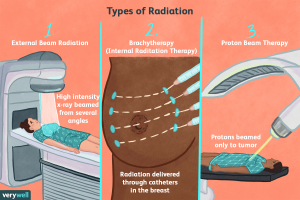Introduction Radiation therapy, a cornerstone in the realm of cancer treatment, harnesses the power of high-energy beams to specifically target and eliminate cancer cells and tumors. This in-depth guide seeks to unravel the complexities surrounding radiation therapy, providing an exhaustive exploration of its various facets, including types, methods, eligible candidates, the array of cancer types
Introduction
Radiation therapy, a cornerstone in the realm of cancer treatment, harnesses the power of high-energy beams to specifically target and eliminate cancer cells and tumors. This in-depth guide seeks to unravel the complexities surrounding radiation therapy, providing an exhaustive exploration of its various facets, including types, methods, eligible candidates, the array of cancer types it addresses, considerations before treatment, the intricacies of the treatment process, associated risks, and an overall outlook on its efficacy.
Types of Radiation Therapy
1. External Beam Radiation
- Description: This prevalent form of radiation therapy involves the precise targeting of cancer sites using beams from an external machine.
- Procedure: Commonly referred to as teletherapy, this procedure ensures accurate delivery of high-energy beams to the specified cancer locations.
2. Internal Radiation Therapy (Brachytherapy)
- Description: Involves the strategic placement of a radiation-containing implant near or within the tumor.
- Implant Forms: Diverse forms such as tubes, wires, capsules, seeds, or pellets, each tailored to the unique characteristics of the cancer being treated.
3. Systemic Radiation Therapy
- Description: A distinctive form of internal radiation therapy where a radioactive substance is either swallowed or injected into the bloodstream.
- Objective: The substance travels throughout the body, locating and effectively eliminating cancer cells wherever they may be.

Image by: yandex.com
How Radiation Therapy Works
Both external beam radiation and brachytherapy share a common goal: the destruction of cancer cells using high-energy beams. The fundamental difference lies in the origin of the radiation—external machines for teletherapy and strategically placed implants for brachytherapy.
Reasons for Opting for Radiation Therapy
Radiation therapy is recommended for a multitude of purposes, including but not limited to:
- Reducing early-stage cancer.
- Preventing the spread of cancer to other parts of the body.
- Treating recurrent cancer.
- Alleviating symptoms associated with advanced stages of cancer.
Types of Cancers Treated
The versatility of radiation therapy renders it effective for a wide array of cancers.
External Beam Radiation
Commonly utilized for:
- Breast cancer.
- Lung cancer.
- Prostate cancer.
- Colon cancer.
- Cancers of the head or neck.
Brachytherapy
Especially effective for cancers in specific body parts, including:
- Cervix.
- Vagina.
- Uterus.
- Rectum.
- Head and neck.
- Eyes.
Additionally, brachytherapy may be recommended for cancers of the prostate, brain, lung, skin, breast, esophagus, anus, and bladder.

Image by: yandex.com
Preparing for Radiation Therapy
Planning Session
- Individuals undergo an exhaustive planning session involving health examinations, discussions with healthcare professionals, and, in certain cases, diagnostic imaging.
Marking and Molding
- For external beam radiation, precision is key. Marks on the skin or temporary tattoos guide the delivery of energy beams.
- Body molds are created to ensure the accurate positioning of individuals during therapy, with optional face masks employed for treatments targeting the head and neck.
During Radiation Therapy
External Beam Radiation
- Patients lie on a treatment table beneath a machine, and beams are precisely directed.
- Communication with the radiation therapist is maintained through a speaker system, ensuring comfort and understanding throughout the process.
Internal Radiation Therapy
- Implants are strategically inserted through a catheter or applicator near the cancer site.
- Treatment duration varies, with some implants remaining permanently but ceasing radiation release after a certain period.
Alongside Other Treatments
- Radiation therapy often complements other treatments, such as surgery or chemotherapy, enhancing overall effectiveness.
- It plays a pivotal role in palliative care, providing relief from symptoms associated with advanced cancer stages.
Side Effects and Risks
Common Side Effects
- Fatigue, loss of appetite, and skin irritation in the treated area are common side effects.
- Proactive strategies and lifestyle adjustments can alleviate these effects, enhancing the overall treatment experience.
Considerations
- Limitations on the amount of radiation administered.
- Potential impact on fertility.
- A slight increase in the risk of secondary cancers, necessitating a careful weighing of potential risks and benefits.

Image by: yandex.com
Outlook
- Radiation therapy, in some cases, proves sufficient for treating certain early-stage cancers.
- Studies suggest enhanced treatment outcomes when combined with chemotherapy post-surgery.
- A crucial consideration is the limitation on the amount of radiation administered, with careful planning to minimize risks and maximize benefits.
Conclusion
In conclusion, radiation therapy emerges as a pivotal and multifaceted tool in the arsenal against cancer. This comprehensive understanding empowers individuals to navigate their cancer journey with informed decision-making, acknowledging the potential benefits and risks associated with this transformative treatment modality.

















Leave a Comment
Your email address will not be published. Required fields are marked with *